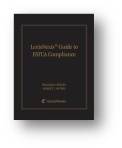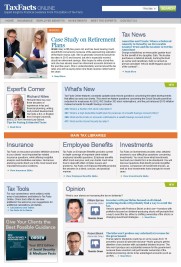EU Council Announces March 2014 Adoption of Expanded EU Savings Directive
On Saturday, March 22, 2014 the EU Council’s General Secretariat announced that it will adopt major amendments to the EU Directive on taxation of savings income at its next March 2014 meeting. The amendments will address the current loopholes, such as application to trusts, to foundations, and to investment income that is comparable to interest income.
Brief Background on EU Savings Directive
The liberalization of capital markets and the free movement of capital within the EU borders revealed how important it was to establish cooperation with a view to preventing, in the direct taxation area, fraud and evasion linked to cross-border financial investments. The problem with taxpayers moving their investments to Member States which did not impose taxation at source while the taxpayers simultaneously under-reported to their respective State of residence (or not reporting at all) the income earned. The EU Savings Directive was adopted to address this situation, coming into effect in 2005.
The mechanism of the Directive works by imposing an obligation to any paying agent in an EU Member State which makes a payment to an individual resident in the other Member State which is the beneficial owner of the income, to report that payment of interest to the competent tax authorities of the Member State in which the paying agent is established. The competent tax authorities of that (source) State in turn transfer the information collected to the competent tax authority of the residence of the beneficial owner. Based on the information received it is possible for the State of residence of the beneficial owner to verify if the amount is declared for tax purposes and to tax the corresponding income.
Loopholes Reported in 2008
In his 2004 Report on the Regulatory, Competitive, Economic and Socio-Economic Impact of the European Union Code of Conduct on Business Taxation and Tax Savings Directive to the United Kingdom Foreign and Commonwealth Office and the Overseas Territories of The Virgin Islands (British), Turks & Caicos Islands, Anguilla and Montserrat, Professor William Byrnes undertook an in-depth analysis of the EU Savings Directive identifying several loopholes that would require later amendments for it to achieve its objectives.
The Savings Directive loopholes include:
• Territorial scope: It is limited to intra-community situations in which a paying agent from one Member State pays to an individual resident in another Member State. It does not apply to payments from outside the EU, i.e. when the paying agent is located in a third (non-EU) State or to payments to beneficial owners who reside in third States.
• Personal scope: it does not apply to persons other than individuals, in particular payments made to legal entities. This limitation provides individuals with opportunities to circumvent the Savings Directive by using an interposed legal person or arrangement.
• Material scope: it does not cover other forms of savings like insurance products, pensions, some tailored investment funds, return on derivative contracts, structured products, etc.
These and other loopholes have been formally reported by the European Commission since 2008. The main findings of a report produced by the Commission identified as a major problem lack of “consistent treatment of other comparable situations”.[1] Pursuing this aim of consistency requires that interest payments obtained by an individual through intermediate vehicles are consistently put on an equal footing with interest payments directly received by the individual. This consistency of coverage is required not only to ensure the effectiveness of the Directive, but also compliance with the rules of the internal market and fair competition between comparable financial products and structures.
A proposal was submitted to the Council which aimed at extending the scope of the Directive.[2]
European Council Announces Amended Savings Directive Adoption in March 2014
On March 22, 2014 the European Council reported in a press release[3] that (emphasis added):
The European Council welcomes the Commission’s report on the state of play of negotiations on savings taxation with European third countries (Switzerland, Liechtenstein, Monaco, Andorra and San Marino) and calls on those countries to commit fully to implementing the new single global standard for automatic exchange of information, developed by the OECD and endorsed by the G20, and to the early adopters initiative.
The European Council calls on the Commission to carry forth the negotiations with those countries swiftly with a view to concluding them by the end of the year, and invites the Commission to report on the state of play at its December meeting. If sufficient progress is not made, the Commission’s report should explore possible options to ensure compliance with the new global standard.
In the light of this, the Council will adopt the Directive on taxation of savings income at its next March 2014 meeting.
The European Council invites the Council to ensure that, with the adoption of the Directive on Administrative Cooperation by the end of 2014, EU law is fully aligned with the new global standard.
What About the Withholding Exception for Austria and Luxembourg?
While most Member States adopted the exchange of information regime provided in the 2005 Savings Directive, three Member States with a tradition of bank secrecy—Belgium, Luxembourg and Austria—preferred to adopt, during a transitional period, a withholding tax regime. They were authorized to adopt a withholding tax (now 35%) on interest income that is paid to individual savers resident in other EU Member States. In the meantime Belgium decided to discontinue applying the transitional withholding tax as of 1 January 2010 and exchange information instead.
Therefore, only Luxembourg and Austria are currently entitled to levy a withholding tax. Luxembourg has notified the EU Commission that from next year, January 1, 2015 it will discontinue applying the transitional withholding tax and thus begin automatically exchanging information for applicable accounts from that date.
Thus, only Austria has expressed that it will maintain the withholding tax option. Austria’s finance minister is quoted in April 2013 stating: “All this data exchange will not put one red cent in my tax coffers, …. I want to have the money, not a data cemetery.”[4] However, in light of the Council’s press release on Saturday, this position has probably changed.
The Austria’s Chancellor had also indicated that Austria may begin automatic exchange regarding the interest from savings accounts beginning 2014.[5] Although this statement is different from the Luxembourg commitment towards automatic exchange of information, it would not be surprising that Austria will soon also endorse this automatic exchange standard within the scope of applying the Savings Directive, in light of FATCA, GATCA, and the Council’s press release.
 Practical Compliance Aspects of Exchange of Information, FATCA and GATCA
Practical Compliance Aspects of Exchange of Information, FATCA and GATCA
For in-depth analysis of the practical compliance aspects of financial service business providing for exchange of information of information about foreign residents with their national competent authority or with the IRS (FATCA), see Lexis Guide to FATCA Compliance, 2nd Edition just published!
William H. Byrnes, author of six Lexis international tax titles, has achieved authoritative prominence with more than 20 books, 100 book chapters and supplements, and 1,000 media articles. In 2008 he was appointed Associate Dean at Thomas Jefferson School of Law, previously obtaining Professor of Law with Tenure at St. Thomas University. William Byrnes was a Senior Manager, then Associate Director of international tax for Coopers and Lybrand, and consulted for clients involved with Africa, Europe, Asia, the Indian sub-continent, and the Caribbean. He has been commissioned by a number of governments on tax policy.
[1] See Commission Staff Working Document, “Refining the present coverage of Council Directive 2003/48/EC on taxation of income from savings”, SEC (2008), p. 559.
[2] See “Proposal for a Council Directive amending Council Directive 2003/48/EC on taxation of savings income in the form of interest payments”, COM (2008) 727 final, of November 13, 2008.
[3] Conclusions, European Council, Brussels, Euco 7/1/14, 21 March 2014.
[4]“All this data exchange will not put one red cent in my tax coffers,” finance minister Maria Fekter said on 13 April. “I want to have the money, not a data cemetery.” Stamatoukou, Eleni, “EU Savings Directive to be modified”, New Europe Online, (April 15, 2013) Available at http://www.neurope.eu/article/eu-savings-directive-be-modified.
[5] Austria’s position regarding the extension of the EU Savings Directive requires that such extension be also imposed through international agreements with San Marino, Switzerland, Lichtenstein, Andorra, and Monaco. However, it is unclear if Austria has since backtracked and made these five agreements a pre-condition for its own automatic information exchange on savings income for depository accounts. See Bodoni, Stephanie, EU Push For Savings-Tax Deal Fought By Luxembourg, Austria, Bloomberg (Nov 14, 2013). Available at http://www.bloomberg.com/news/2013-11-14/eu-set-to-fail-to-meet-savings-tax-goal-on-luxembourg-opposition.html.
 distance education methodologies called Alternative Methods of Teaching and The Effectiveness of Distance Learning For Legal Education. The white paper makes the case for combining traditional classroom learning with online education because it is cost effective, accessible, flexible, and addresses the biggest criticism of legal education today, the lack of law school graduates who can think and practice law. The white paper covers such topics as –
distance education methodologies called Alternative Methods of Teaching and The Effectiveness of Distance Learning For Legal Education. The white paper makes the case for combining traditional classroom learning with online education because it is cost effective, accessible, flexible, and addresses the biggest criticism of legal education today, the lack of law school graduates who can think and practice law. The white paper covers such topics as – Professor Byrnes explains, “The goal is to implement best practices in law schools across the country to the benefit of our esteemed institutions, our law students and the legal system at large.” To this end, he is a primary driver of the invitation-only Work Group for Distance Learning in Legal Education that will finalize its Best Practice Report at its 10th development meeting (see https://www.eventbrite.com/e/working-group-for-distance-learning-in-legal-education-fall-2014-meeting-registration-12051364957).
Professor Byrnes explains, “The goal is to implement best practices in law schools across the country to the benefit of our esteemed institutions, our law students and the legal system at large.” To this end, he is a primary driver of the invitation-only Work Group for Distance Learning in Legal Education that will finalize its Best Practice Report at its 10th development meeting (see https://www.eventbrite.com/e/working-group-for-distance-learning-in-legal-education-fall-2014-meeting-registration-12051364957).




















